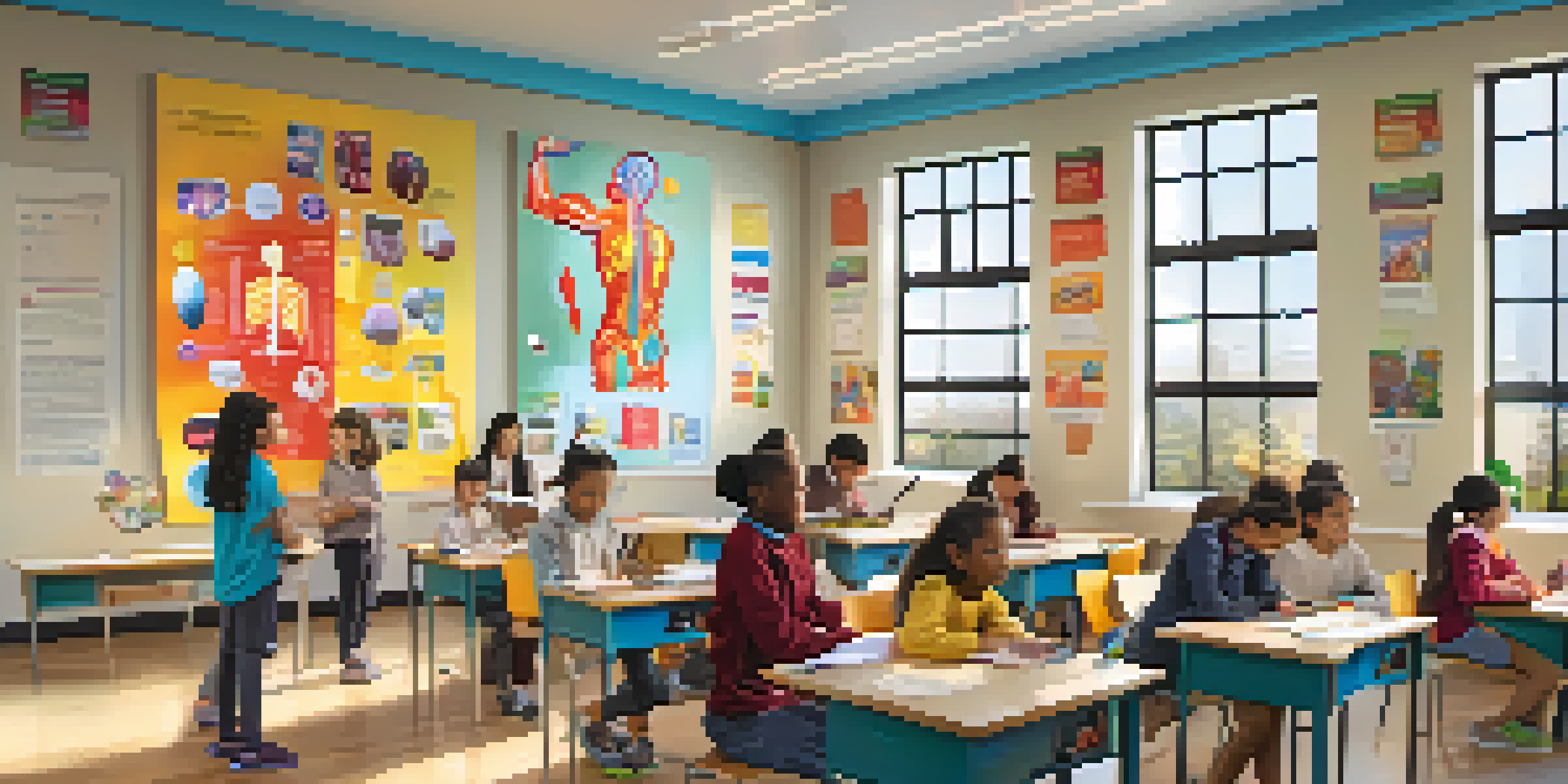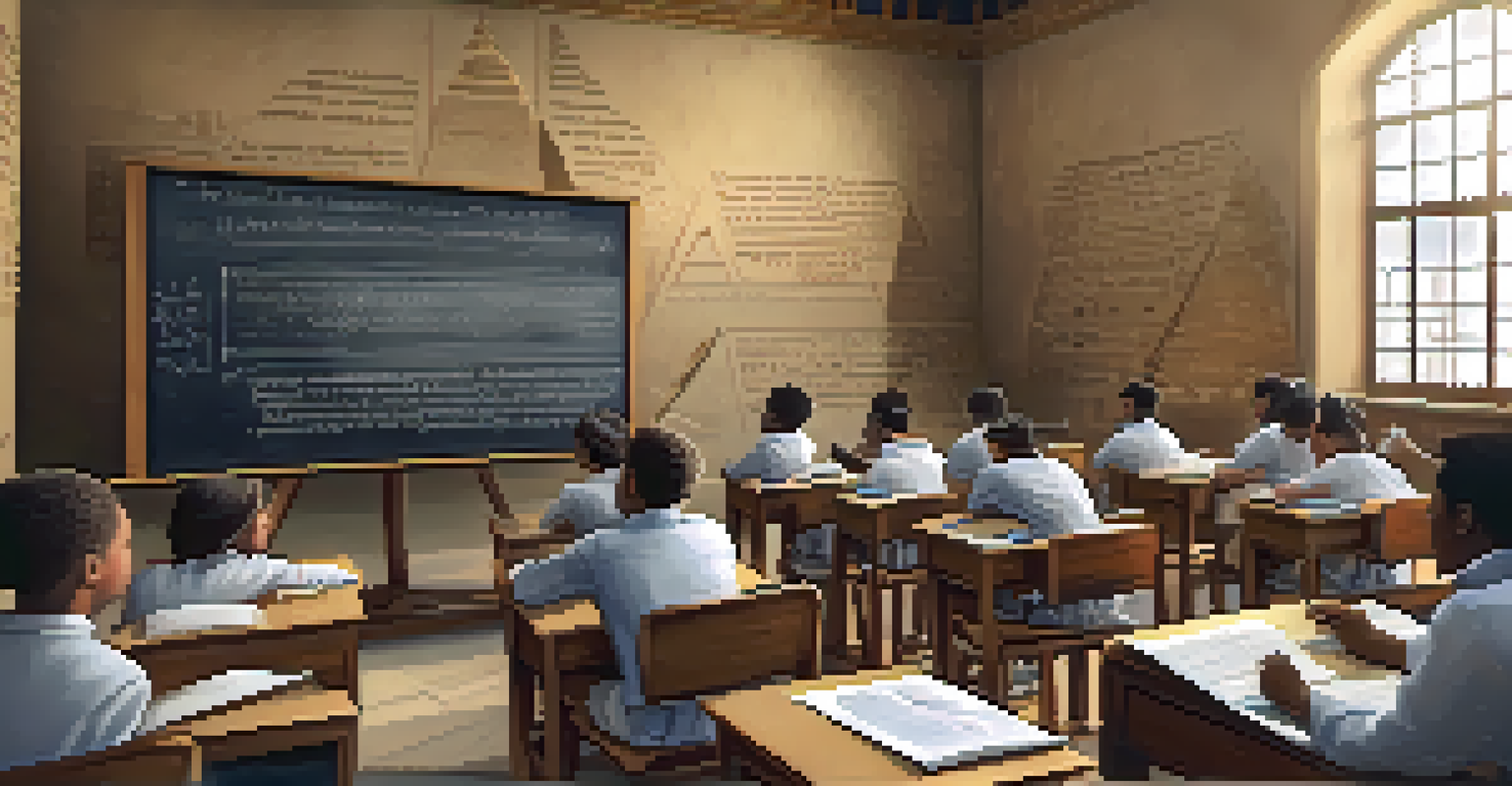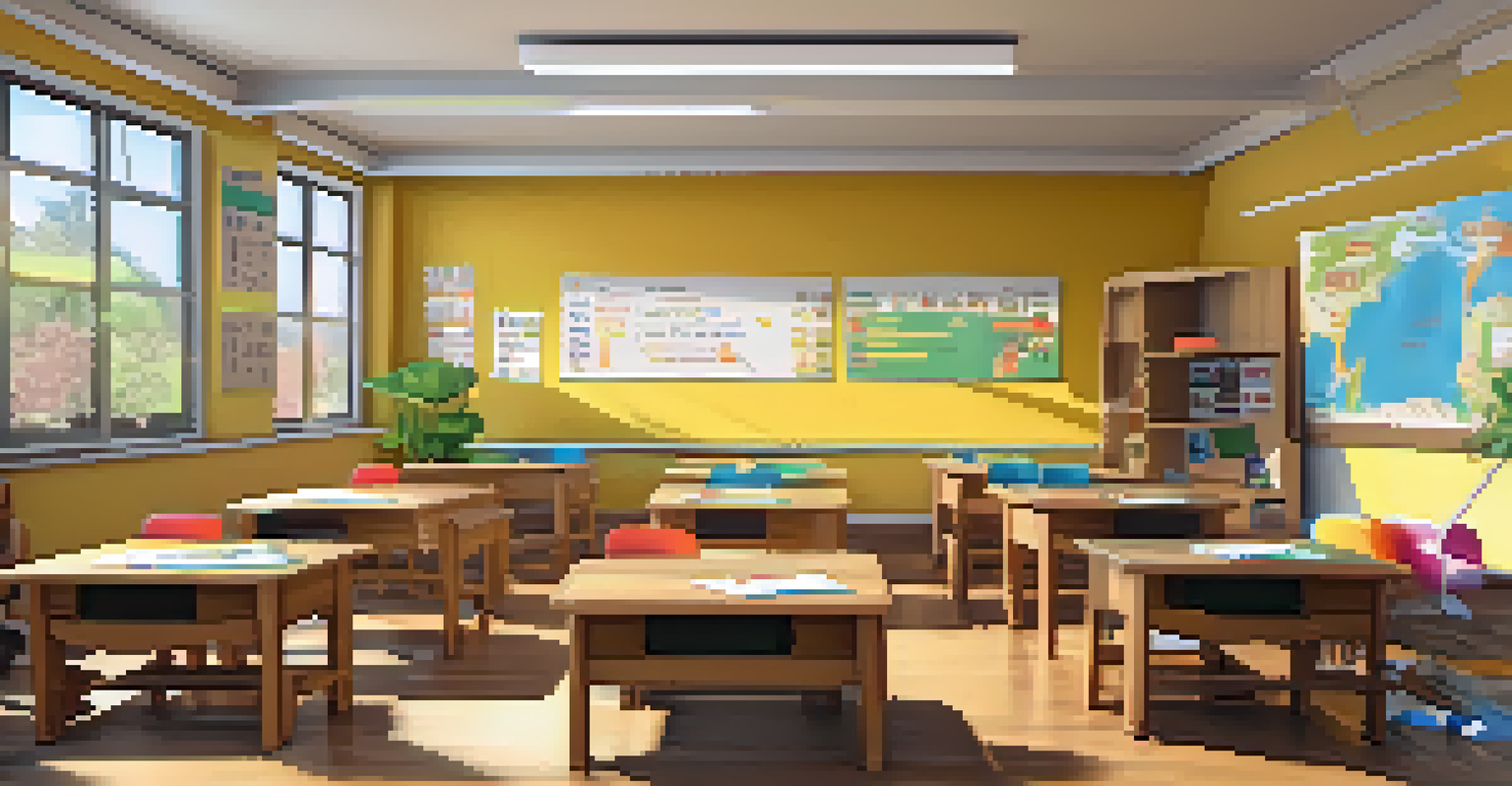Case Studies: Successful AR Integration in Schools

Introduction to Augmented Reality in Education
Augmented Reality (AR) is transforming the educational landscape by merging digital content with the real world. It allows students to interact with 3D models and simulations, making learning more engaging and effective. Imagine a biology class where students can explore the human body in a virtual environment rather than just in textbooks.
The future of learning is not just about textbooks, but about experiences that engage and inspire students.
This technology is not just a gimmick; it has proven to enhance understanding and retention of complex subjects. As educators look for innovative ways to captivate students, AR emerges as a powerful tool. With its ability to cater to different learning styles, AR is becoming an essential component of modern classrooms.
In this article, we will delve into case studies that highlight successful AR integration in schools, showcasing the impact on student engagement and learning outcomes. From history lessons to science projects, we’ll explore how AR is reshaping education.
Case Study: AR in Science Classes
One of the most compelling examples of AR in action is its use in science classes. For instance, a school in California implemented an AR app that allowed students to visualize chemical reactions in real-time. Instead of merely reading about reactions, students could see molecules interact, making the learning experience much more tangible.

Feedback from both students and teachers was overwhelmingly positive. Students reported feeling more curious and excited about experiments, while teachers noted improved understanding of difficult concepts. This hands-on approach not only makes learning fun but also deepens comprehension.
AR Enhances Student Engagement
Augmented Reality significantly boosts student interest and motivation in various subjects through interactive and immersive experiences.
Such initiatives demonstrate how AR can bridge the gap between theoretical knowledge and practical application. By immersing students in interactive simulations, educators can foster a deeper appreciation for scientific inquiry.
Case Study: Interactive History Lessons with AR
Another fascinating case is how AR has transformed history lessons. In a school district in New York, teachers used AR to bring historical events to life. Students could use their tablets to view 3D models of ancient monuments, such as the Pyramids of Giza, right in their classroom.
Technology is best when it brings people together and enhances the way we learn.
This approach allowed students to explore these structures from various angles and even walk through reconstructed historical sites. The immersive experience sparked discussions and debates, enriching the learning atmosphere. Students felt as if they were part of history, rather than just passive recipients of information.
By integrating AR into history lessons, educators are not only making the subject more engaging but also helping students develop critical thinking skills. They learn to analyze and interpret historical events in a more interactive way.
Case Study: Enhancing Language Learning with AR
AR is also making strides in language learning, as evidenced by a successful program in a Texas high school. Here, teachers introduced an AR app that allowed students to scan objects around the classroom to see their names in different languages. This interactive method created a dynamic vocabulary-building experience.
Students enjoyed the gamified aspect of learning and were more likely to participate actively. Moreover, the use of AR helped visual learners grasp new words more effectively, bridging the gap between language and context. When students could see and interact with objects, their retention improved significantly.
AR Bridges Theory and Practice
By allowing students to visualize complex concepts and historical events, AR helps connect theoretical knowledge with real-world applications.
This case highlights how AR can cater to diverse learning needs and styles, making language acquisition more accessible and enjoyable. As students engage with their environment, they build confidence in using new languages.
Impact of AR on Student Engagement and Motivation
The integration of AR technologies in schools has shown a remarkable impact on student engagement and motivation. A study from a district in Florida revealed that students using AR tools reported higher levels of interest in their subjects. This uptick in enthusiasm often translated into better attendance and participation.
When students are excited about what they’re learning, they’re more likely to delve deeper into the material. AR encourages exploration and discovery, making students active participants in their education. This shift from passive to active learning is crucial for developing critical thinking skills.
As educators strive to keep students motivated, AR serves as an innovative solution, providing a fresh and interactive approach to traditional lessons. The result is not just improved engagement, but also a more enriching educational experience.
Challenges of Implementing AR in Schools
Despite its benefits, implementing AR in schools isn't without challenges. One significant hurdle is the cost of technology, which can be a barrier for many schools, particularly those in low-income areas. Investing in AR tools and training staff requires financial resources that some districts may not have.
Additionally, there’s a learning curve for both teachers and students when it comes to using new technology effectively. Educators need proper training to integrate AR into their lesson plans seamlessly. If not supported adequately, the risk of underutilization or ineffective implementation increases.
Challenges in AR Implementation
Despite its benefits, schools face challenges such as high costs and the need for teacher training to effectively integrate AR into the curriculum.
However, with careful planning and investment in professional development, schools can overcome these challenges. By collaborating with tech companies and seeking grants, educators can create a budget-friendly path to AR integration that benefits all students.
Future Prospects of AR in Education
Looking ahead, the future of AR in education appears promising. As technology continues to evolve, we can expect even more sophisticated AR applications that cater specifically to educational needs. Innovations such as AR glasses and more immersive experiences could redefine how we approach learning.
Furthermore, as AR becomes more accessible, its integration into curriculums will likely expand. Schools might use AR for virtual field trips, allowing students to explore places they might never visit. This could open up new horizons for global learning and cultural awareness.

The potential for AR in education is vast, and as we continue to see successful case studies, it’s clear that this technology will play a significant role in shaping the future of learning.
Conclusion: Embracing AR for Enhanced Learning
In conclusion, the case studies we've explored demonstrate the transformative power of AR in education. From science and history to language learning, AR provides students with interactive experiences that enhance understanding and retention. By making lessons more engaging, AR fosters a love for learning that extends beyond the classroom.
While challenges exist in implementing this technology, the potential benefits far outweigh the drawbacks. With the right resources and training, educators can harness AR to create immersive learning environments that captivate students. The future of education is bright, and AR is at the forefront of this evolution.
Embracing AR is not just about keeping up with technological trends; it’s about reimagining how we teach and learn. As schools continue to innovate, AR will undoubtedly play a crucial role in preparing students for a dynamic and ever-changing world.